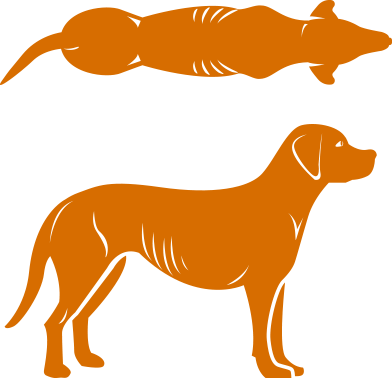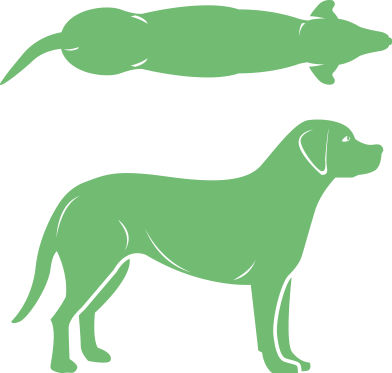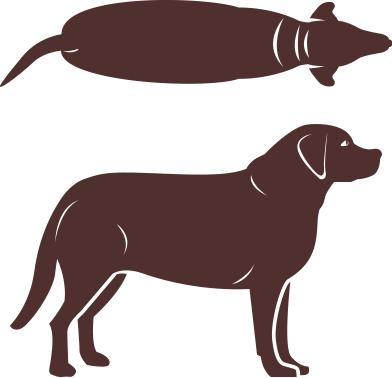Please note
There are some cases where the natural shape of a dog may mean this simple system doesn’t translate as easily. For example, Whippets and Greyhounds tend to have lean physiques while a Staffie will have a broader shape. A Bichon Frisé will have a nice fluffy coat for you to contend with. If you need help using the tool, print a hard copy version and take it to your local vet or pet care professional for advice.
For more information on checking your dog’s weight and tips on how to prevent weight gain go to www.ukpetfood.org
Feeding advice
A feeding guide is printed on the reverse of each bag of Vitalin, which provides instructions as to how much food to offer your dog. Feeding amounts should be based on the ideal adult body weight for your dog and spread across two meals for adult dogs. For puppies aged 2-3 months you should feed 4 meals, 4-6 months of age 2-3 meals, 6+ months gradually reduce to 2 meals a day by the time they are an adult. However, please be advised that this information is given as a guide only and exact feeding amounts should be varied according to your dog’s age, sex, breed, condition and activity levels. Additional help and information can be found in the feeding advice section of the website.



